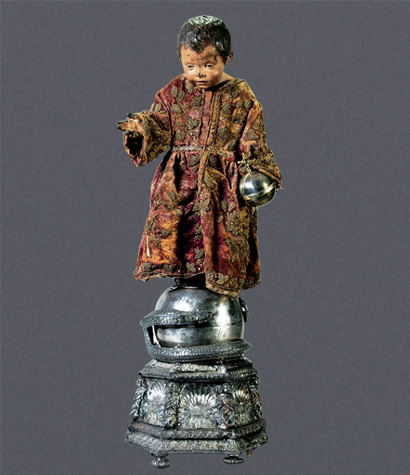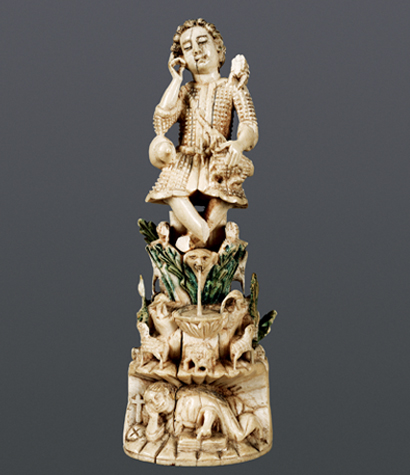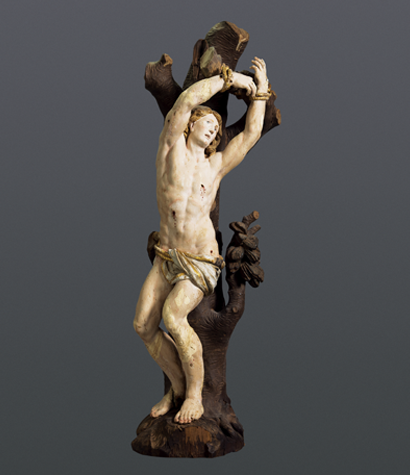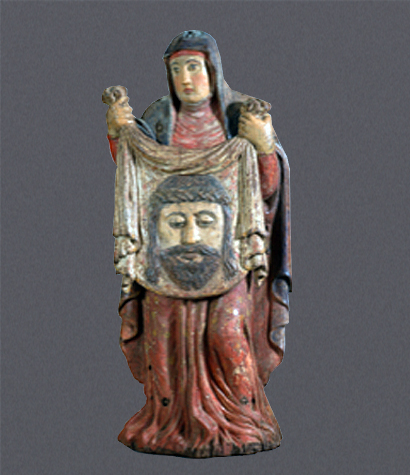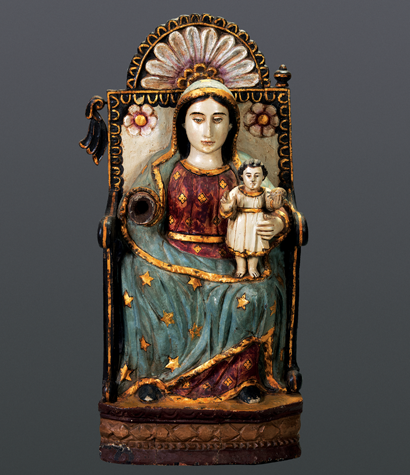
This life-size image of Our Lady of the Rosary, with her majestic bearing and serene countenance, is an imposing example of Indo-Portuguese art. In her hands she carries the Infant Jesus, Saviour of the World, who wears the same serene expression, and holds his customary globe.
The image has brilliant polychrome colouring, mostly well preserved. The Mother wears a flowing Baroque-style robe that hides her feet. While the lower part of the robe retains the original creamy gold hue, at the top it can be seen mainly in the intricately carved folds. Around her shoulders, she wears a fichu, an article of clothing from late 18th-century Europe, fastened at the breast by a brooch set with gemstones. Over the robe she wears the traditional blue mantle that reaches past her feet. The Child is dressed in a white gown like those seen in 18th- and, more specifically, 19th century images. The image has been repainted, with the typically Indo-Portuguese gilding found in the trimming of the robes taking on a darker, coppery-brown hue. While Mother and Child, with their intense blue eyes and rosy cheeks, are European in aspect, their black, wavy hair provides the Indian touch. The Mother’s long, flowing tresses visible at the back stretch to well below her waist in Indian style.
The association of the Virgin Mary with the rosary dates, by legend, to 1206, when St. Dominic was trying to win the residents of Albi in France back to the faith. There, he had a vision of the Virgin Mary who gave him a rosary to help him, leading to this form of prayer to her. The specific image of Our Lady of the Rosary celebrates the European victory against the invading Ottomans at the Battle of Lepanto in 1571. At the same time as the battle, the Rosary Confraternity was being held at the Dominican headquarters in Rome, and so it was believed that the victory was won at the Virgin Mary’s intercession. Another name for this representation is thus Our Lady of Victory.
NOTES
The image of St. Stanislas Kostka in the museum’s collection shares provenance, scale and sculptural features with Our Lady of the Rosary, and is likely from the same workshop.
PUBLICATIONS
Museum of Christian Art, Convent of Santa Monica, Goa, India, Calouste Gulbenkian Foundation, Lisbon, 2011.


